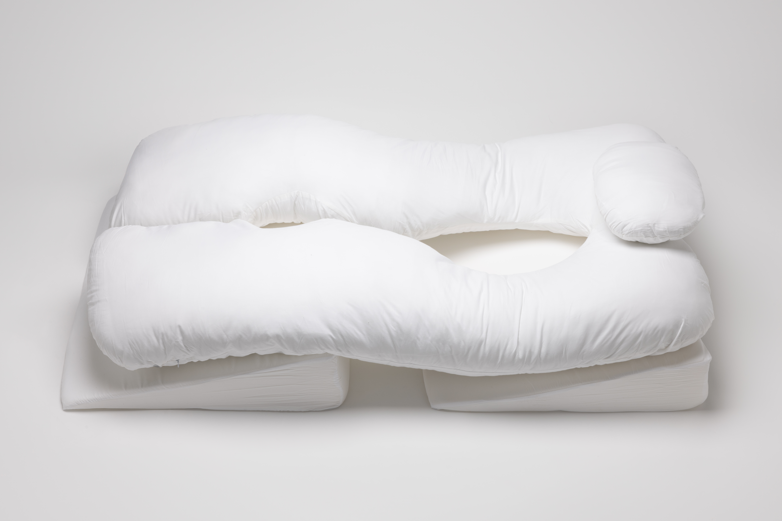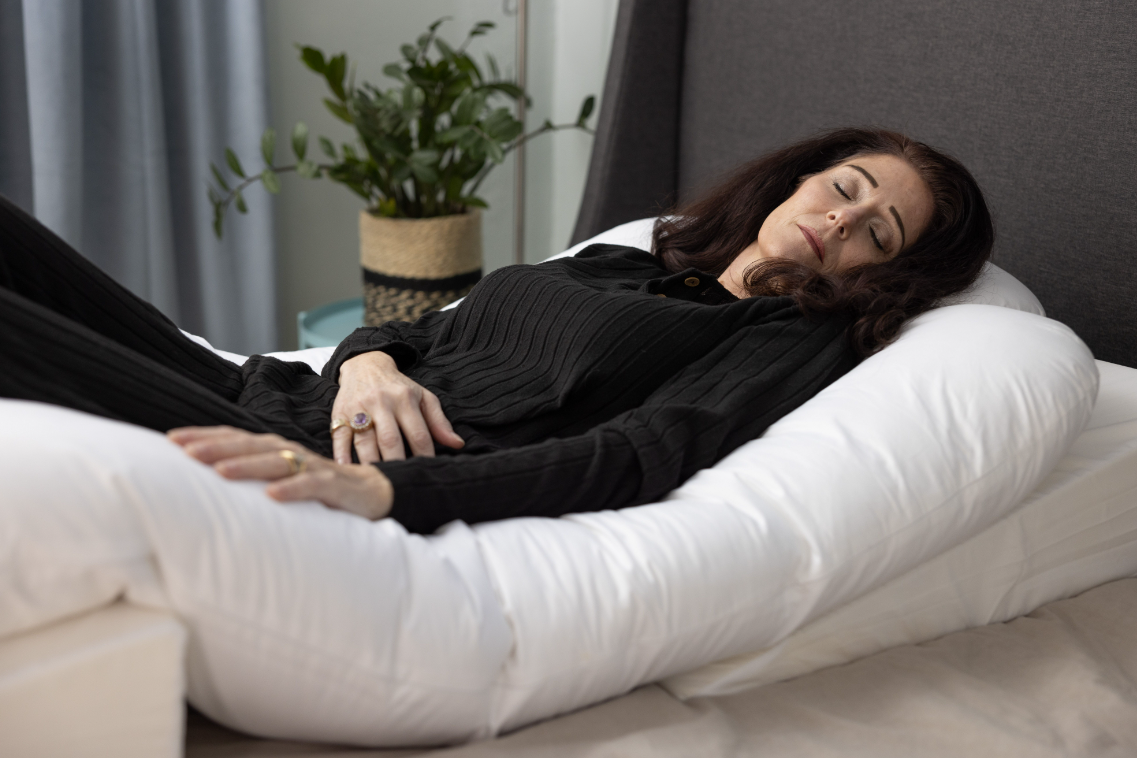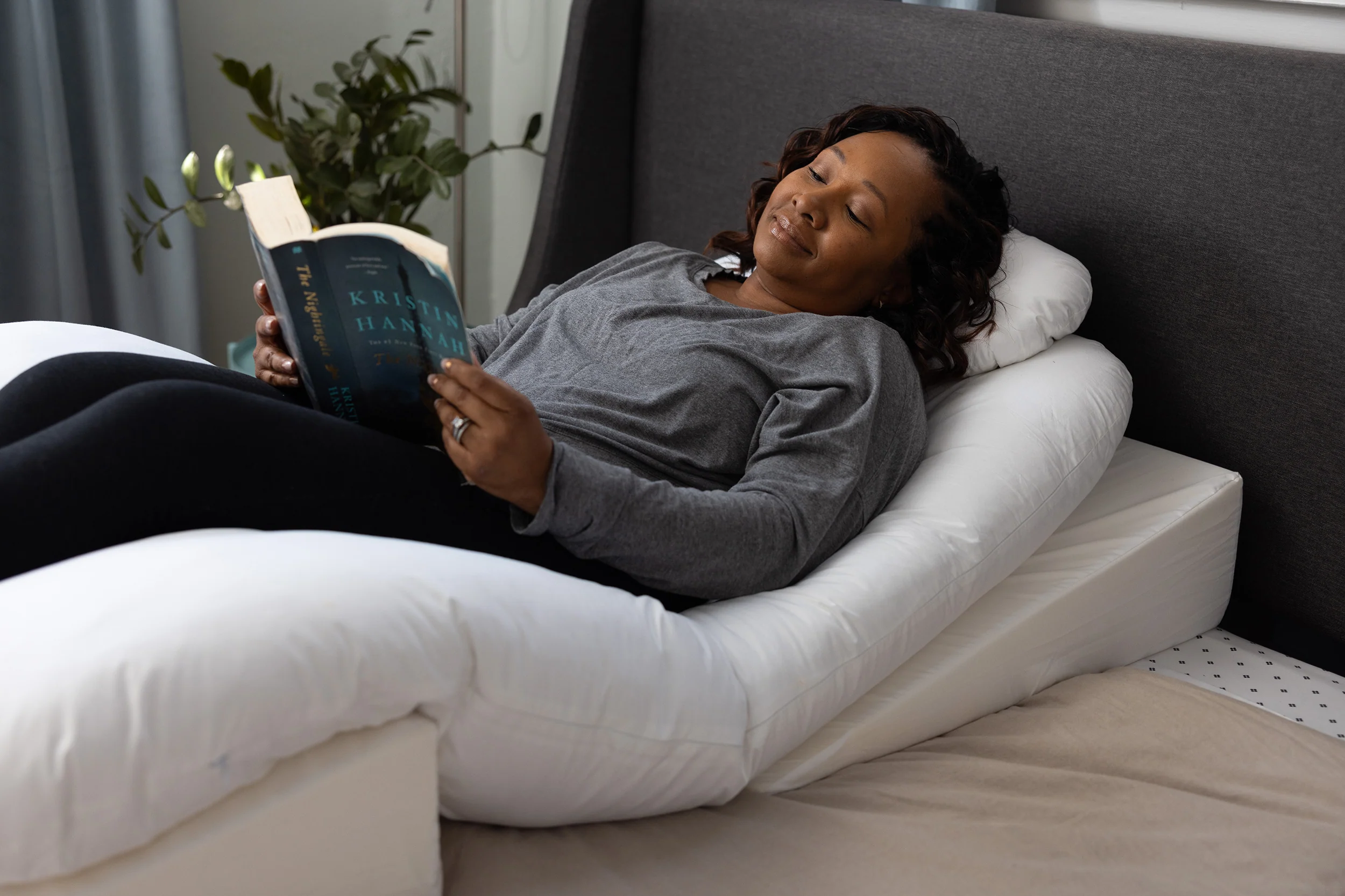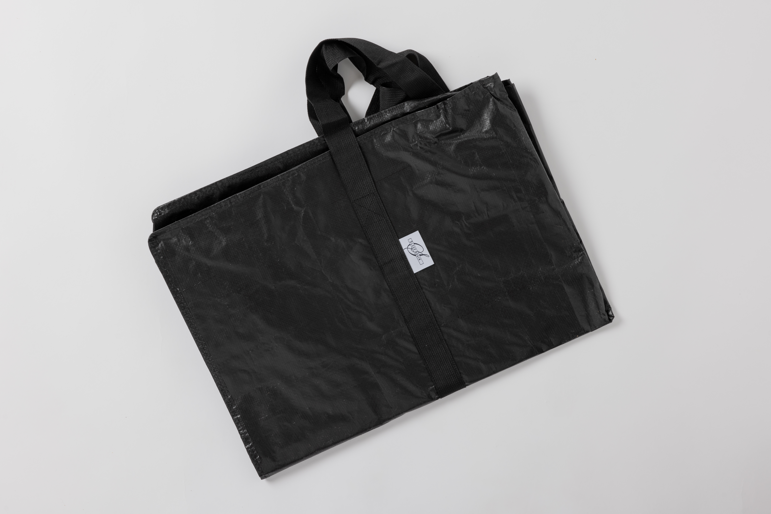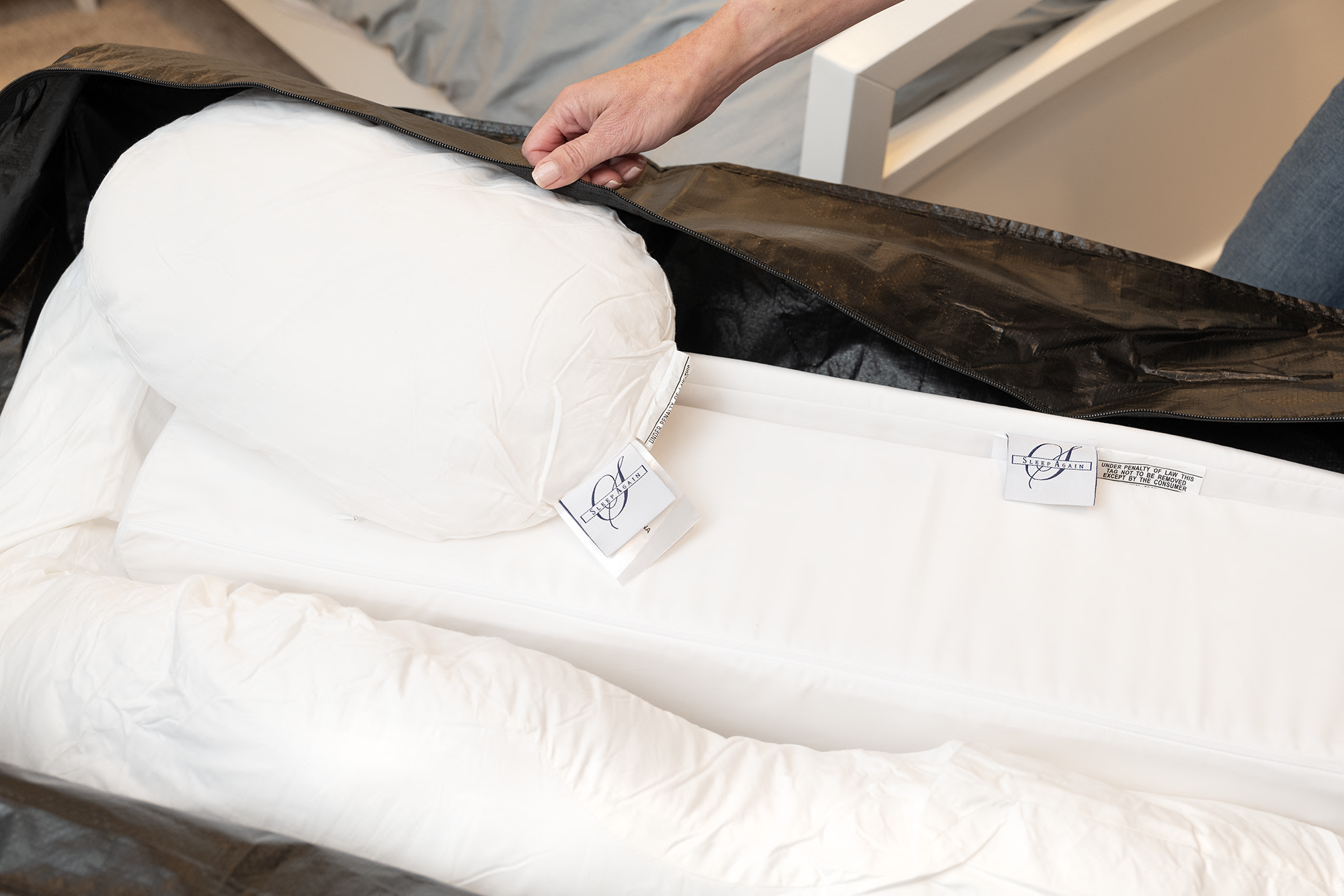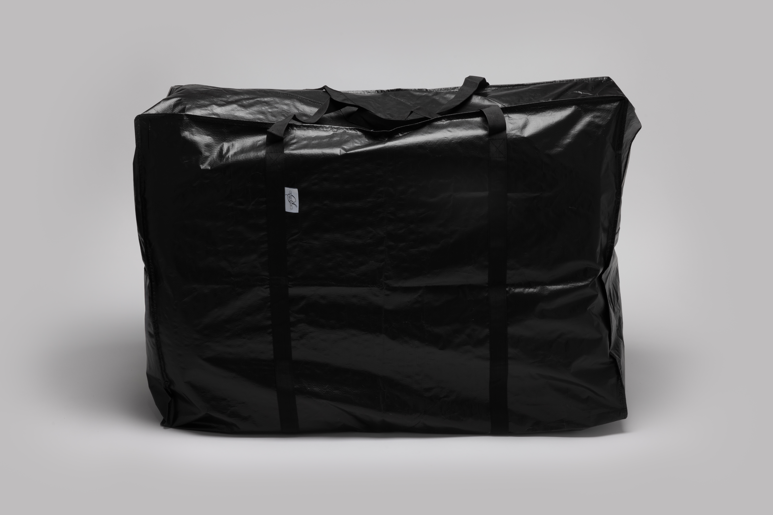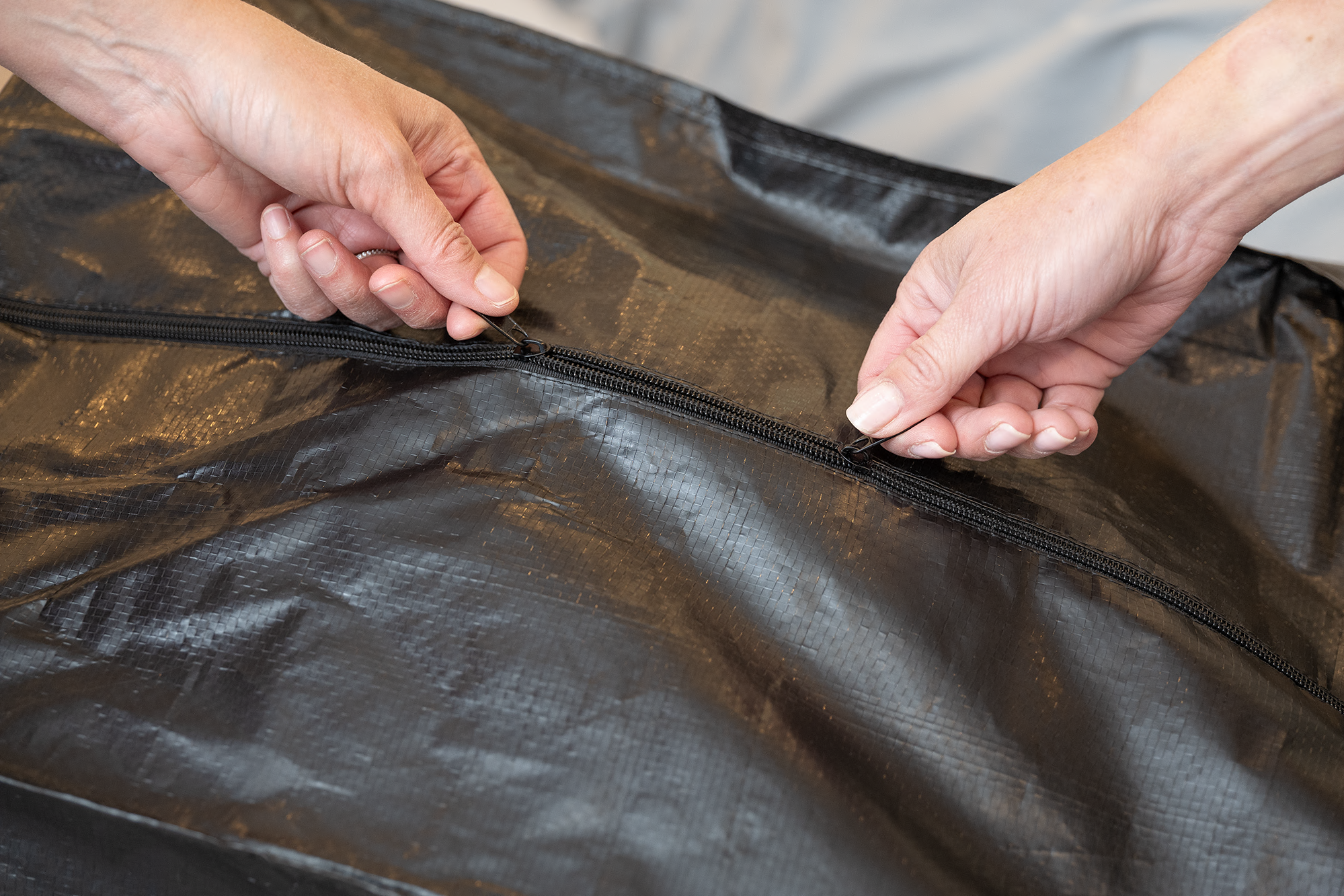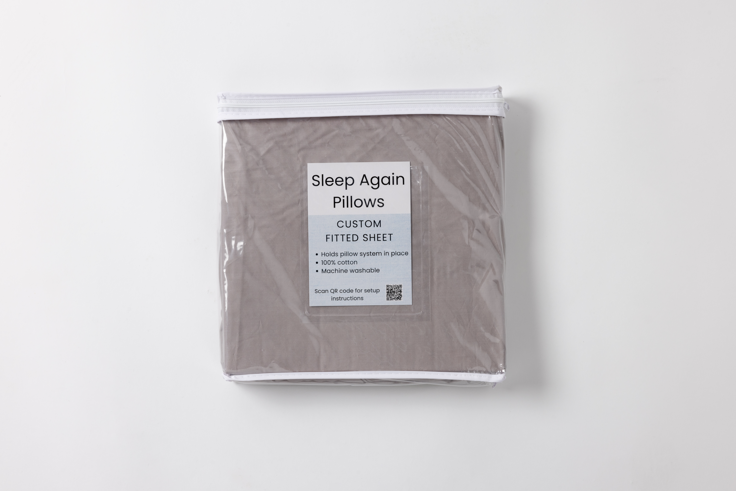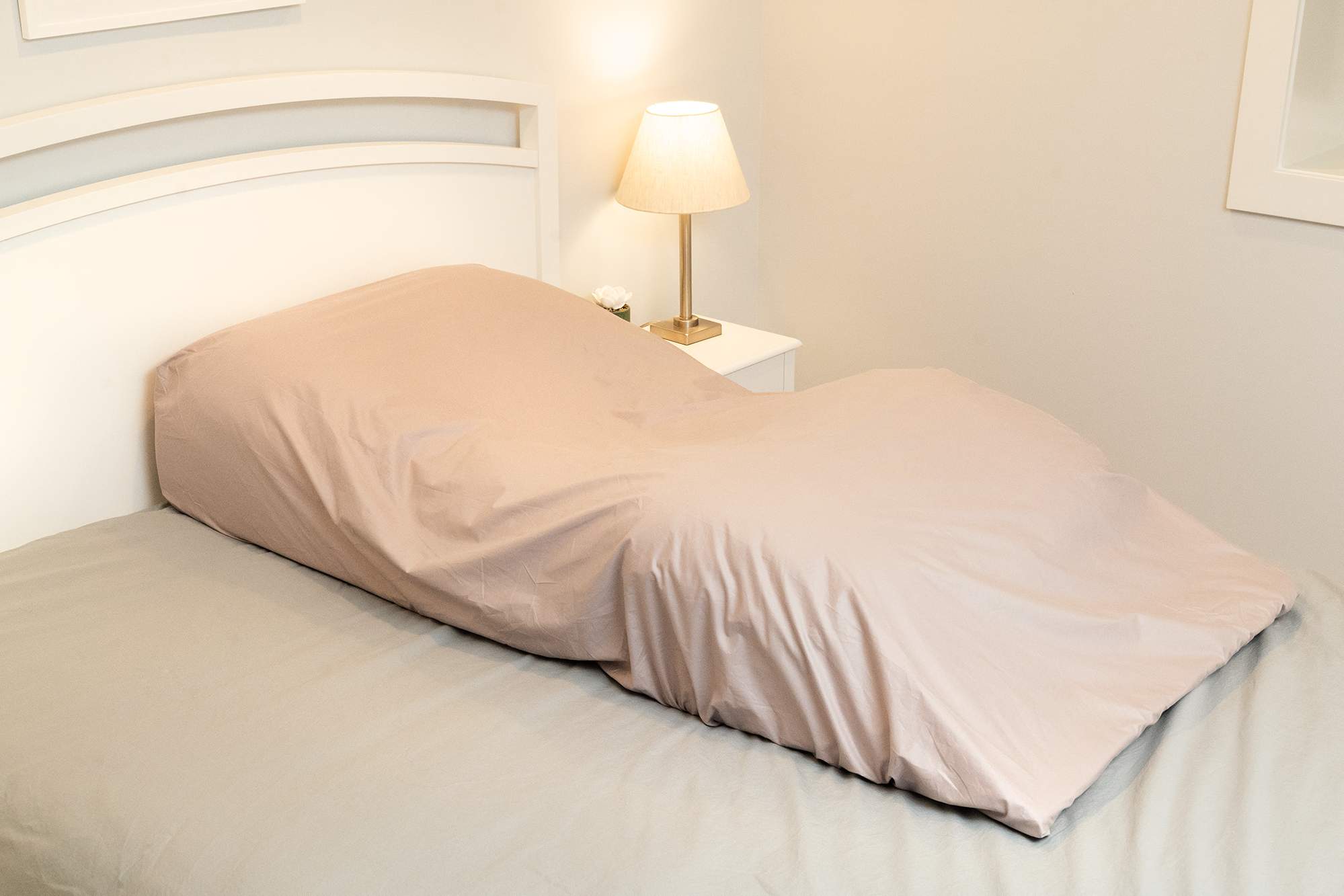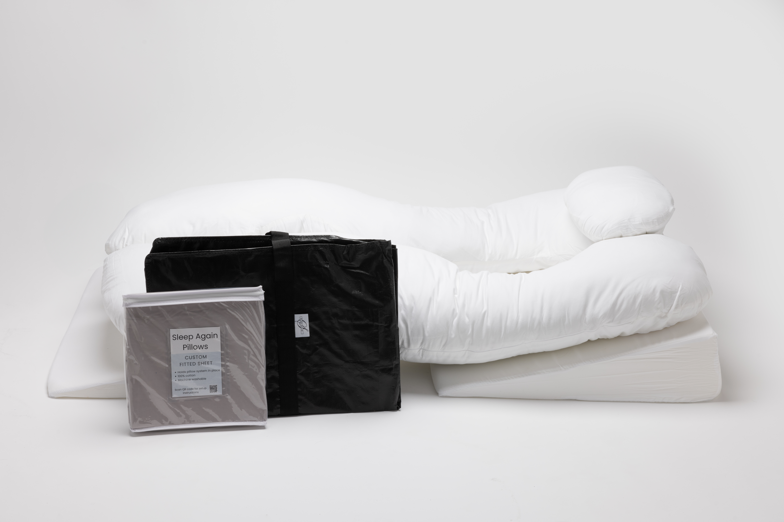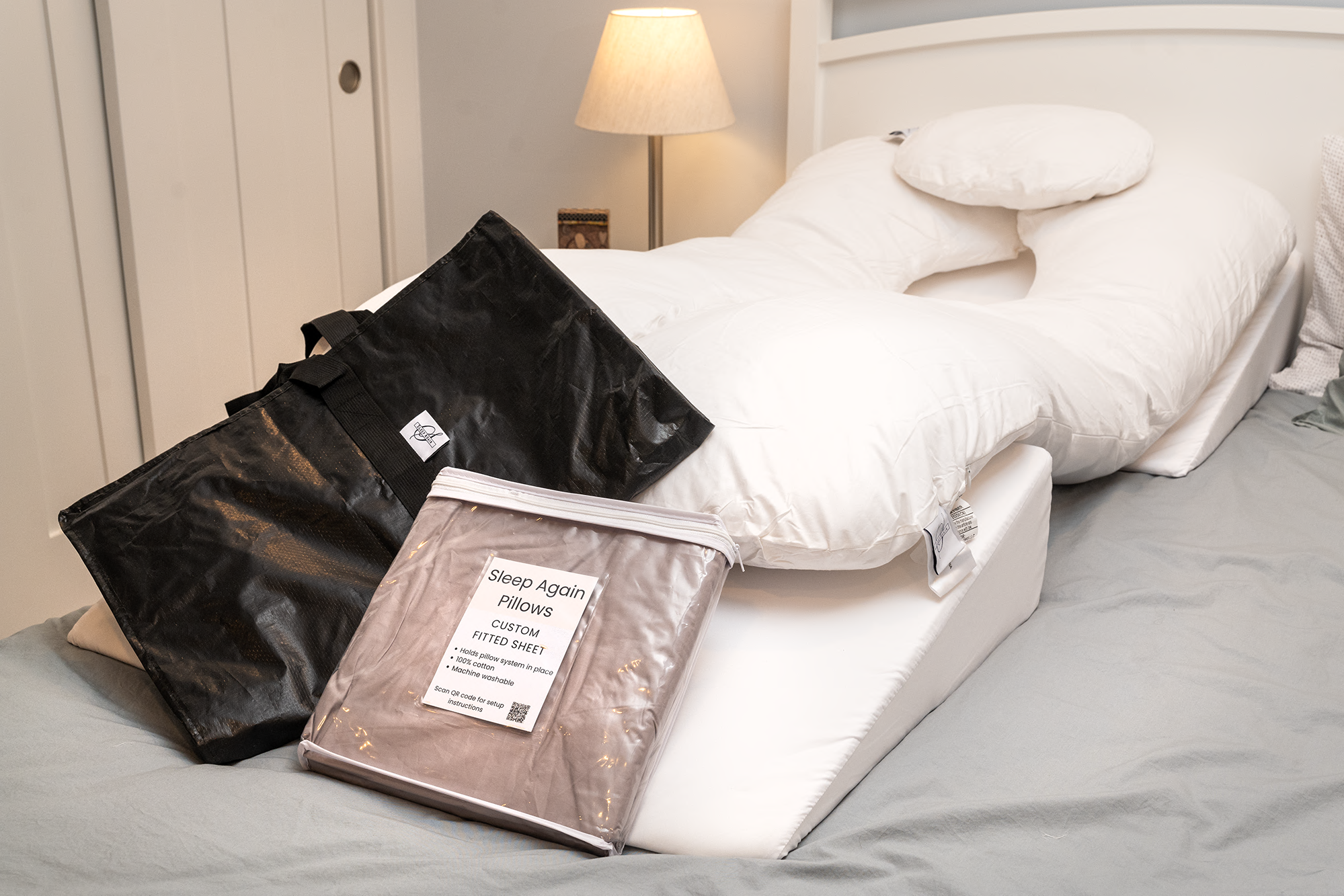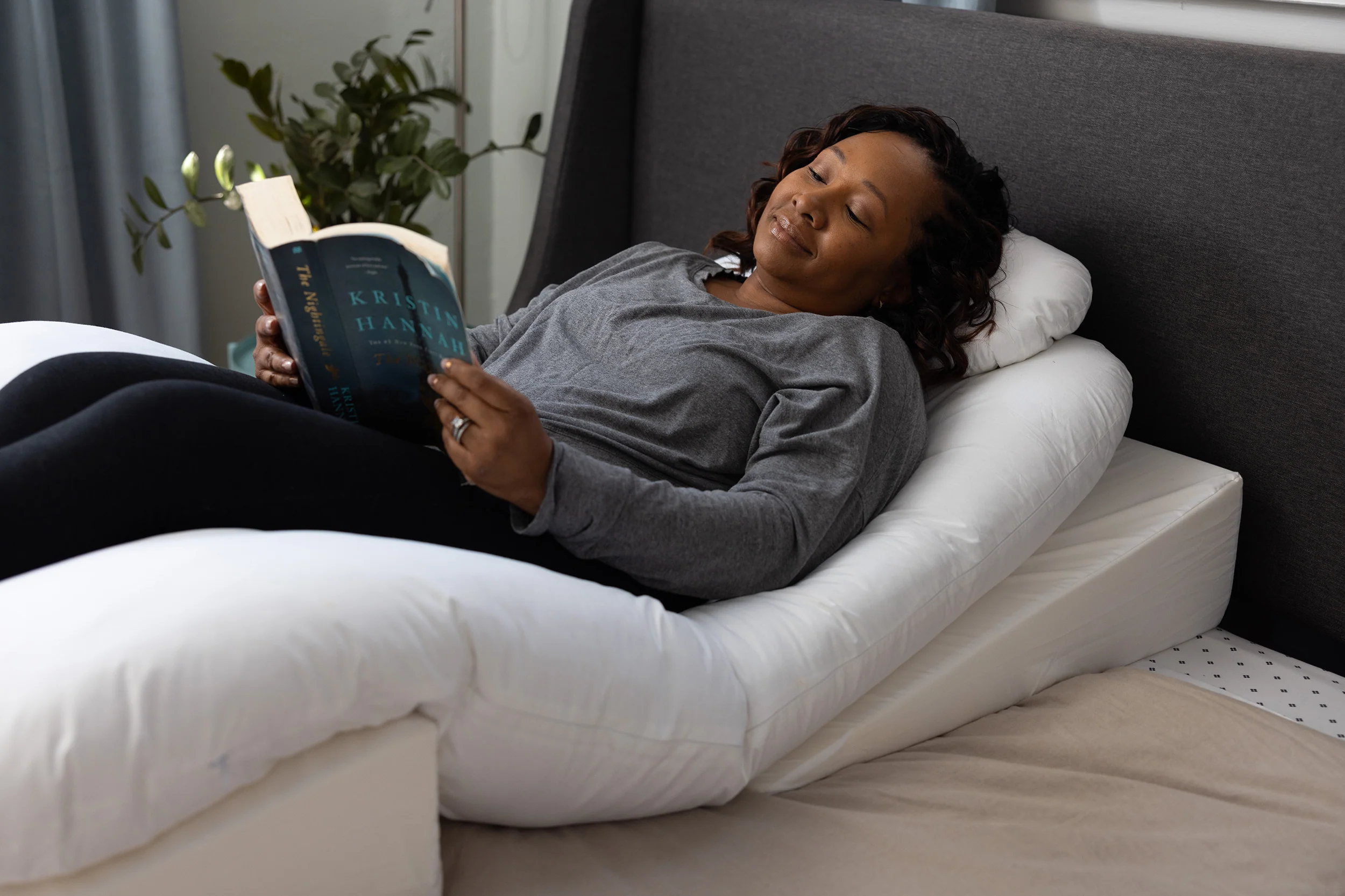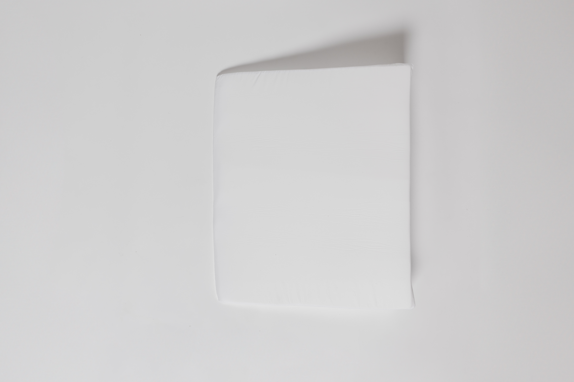Welcome to recovery guidance for those experiencing tummy tuck sleep challenges. If you're currently reading this during a difficult night, trying to find comfortable positioning after your surgery, you're not alone in facing these recovery hurdles.
Here's what many patients discover about tummy tuck recovery: while the surgery itself is called "abdominoplasty," sleeping afterward can feel challenging as your body adjusts to significant changes in your abdominal area that affect comfort and positioning.
Understanding Your Tummy Tuck Recovery Journey
Tummy tuck surgery fundamentally changes your abdominal anatomy in ways that directly impact sleep comfort. Unlike other surgical procedures that affect isolated areas, abdominoplasty involves comprehensive reconstruction of your entire midsection—from muscle repair to skin removal to tissue repositioning.
The Surgical Impact on Sleep
During your tummy tuck procedure, your surgeon made significant modifications that affect every aspect of how your body rests and moves. The rectus abdominis muscles—your "six-pack" muscles—were likely separated and then surgically brought together and tightened. This muscle repair, called rectus diastasis correction, creates internal tension that influences comfortable positioning for weeks.
The extensive skin removal means your body's surface area has literally changed. Your nervous system needs time to adapt to new spatial relationships, and what once felt natural may now feel foreign or uncomfortable. Additionally, the repositioning of your belly button and the creation of a new waistline contour affects how your body distributes weight when lying down.
Blood circulation patterns in your abdominal area have been temporarily disrupted and are working to reestablish themselves. The lymphatic system, responsible for reducing swelling and removing cellular waste, has been interrupted and needs support through proper positioning to function optimally during healing.
Why Standard Sleep Advice Doesn't Apply
Generic post-surgical sleep advice often assumes you're dealing with a single incision or localized area of healing. Tummy tuck recovery involves simultaneous healing of multiple tissue layers: skin, subcutaneous fat, fascia, and muscle. Each layer has different healing timelines and positioning requirements.
Your core stability—the foundation of almost every movement including getting in and out of bed—has been intentionally disrupted and requires weeks to reestablish. This means every position change becomes a strategic decision rather than an automatic movement.
Pre-Surgery Sleep Preparation: Setting Yourself Up for Success
One of the most overlooked aspects of tummy tuck planning is preparing your sleep environment before surgery day. While you're focused on medical preparations and recovery logistics, taking time to optimize your sleep setup while you're still mobile and thinking clearly can dramatically impact your recovery experience.
Testing Your Recovery Position
Before surgery, spend several nights practicing elevated back sleeping at 40-45 degrees. This trial run reveals practical challenges you'll face during actual recovery when movement is limited and discomfort is heightened. Pay attention to which pillow arrangements stay stable throughout the night, where pressure points develop, and how easy it is to get up from the elevated position.
Document what works during these trial nights. Take photos of successful pillow arrangements and note the time required for setup. This preparation becomes invaluable when you're recovering and decision-making is impaired by pain medications and healing fatigue.
Bedroom Logistics Planning
Consider the practical aspects of your bedroom layout during extended recovery. Position a comfortable chair near your bed for times when lying down becomes too uncomfortable. Clear pathways between your bed and bathroom, removing any obstacles that could create tripping hazards when you're moving carefully and potentially unsteadily.
Plan for extended periods in your bedroom. Stock your bedside area with entertainment options, reading materials, and comfort items. Consider the placement of charging stations for devices, as you'll likely spend more time in bed than usual during the first weeks of recovery.

The Complex Reality of Tummy Tuck Recovery Sleep
The Anatomy of Sleep Problems
Your abdominoplasty recovery involves more than just healing incisions—your abdominal muscles have been surgically tightened, excess skin has been removed, and your entire midsection requires time to heal and function normally again.
Core muscle recovery challenges: Your abdominal muscles have been surgically tightened and need time to heal, making every position change require careful consideration. Unlike other surgical sites that can be easily protected and immobilized, your abdomen is involved in virtually every movement you make. Breathing deeply, coughing, laughing, and even talking engage your abdominal muscles to some degree.
Incision site vulnerability: Your lower abdominal incision runs hip to hip, creating a vulnerable zone that can't handle pressure or stretching. The rectus abdominis muscles, which have been surgically tightened, need time to adapt to their new positioning, creating internal tension that can make lying flat uncomfortable or even painful.
Post-surgical swelling patterns: Swelling after tummy tuck surgery follows predictable patterns that directly impact sleep comfort. Initial swelling peaks around day 3-5 and gradually decreases over several weeks. However, this swelling isn't uniform—it tends to be more pronounced in dependent areas when you're upright and can shift when you lie down. Morning swelling is often different from evening swelling due to overnight fluid redistribution.
Equipment management complexity: You're managing surgical drains that require secure positioning, wearing compression garments designed for healing rather than comfort, dealing with limited mobility from core muscle healing, and maintaining precise elevation angles for optimal recovery. This combination creates positioning challenges that standard household pillows simply can't address effectively.
Movement anxiety and planning: Constant awareness that rolling over or getting up requires careful choreography affects sleep quality even when you're comfortable. Simple actions like rolling over, sitting up, or getting out of bed become complex maneuvers requiring planning and careful execution.
SHOP THE BEST TUMMY TUCK PILLOW
The Sleep Position Strategy: What Works and What Doesn't
Positions to Completely Avoid
Stomach sleeping is absolutely contraindicated during tummy tuck recovery. This position places direct pressure on your healing incision and can create tension across the surgical site that interferes with proper healing. Even partial stomach sleeping or three-quarter prone positions should be avoided.
Completely flat back sleeping can put unacceptable tension on your newly tightened abdominal muscles. When you lie completely flat, your abdominal muscles must work to maintain your spine's natural curve, creating tension across the surgical repair site.
Side sleeping without comprehensive support can cause your abdominal contents to shift in ways that create pulling sensations across your incision. Additionally, unsupported side sleeping can compress your compression garment unevenly, reducing its therapeutic effectiveness.

Your Recovery Position: Elevated Back Sleeping (30-45 Degrees)
Elevated back sleeping becomes your recovery headquarters—the position that makes healing possible while still allowing for restorative sleep. This isn't simply propping yourself up with pillows; it's creating a therapeutic environment that supports every aspect of your healing process.
The comprehensive benefits of therapeutic elevation:
Reduces incision tension: The elevated angle works with gravity to reduce pulling forces across your surgical site. When you're elevated at 30-45 degrees, several physiological processes work in your favor, creating optimal conditions for tissue healing.
Minimizes swelling through improved circulation: Your heart doesn't have to work as hard against gravity to circulate blood throughout your body. This improved circulation delivers more oxygen and nutrients to healing tissues while more efficiently removing waste products that can slow recovery. The elevation angle creates optimal conditions for lymphatic drainage, as your lymphatic system relies on gravity and muscle contractions to move fluid.
Supports compromised core function: External positioning support compensates for temporarily weakened abdominal muscles, allowing them to heal without constant engagement for postural support.
Facilitates easier mobility: Getting up from an elevated position requires minimal core engagement compared to rising from completely flat positioning—crucial when your abdominal muscles are healing from surgery.
Improves respiratory function: Your diaphragm can move more freely when elevated, improving oxygen exchange and reducing the work of breathing. This is particularly important during recovery when pain or medications might otherwise compromise respiratory function.
SHOP THE BEST PILLOW FOR TUMMY TUCK RECOVERY
Recovery Timeline and Position Progression
Weeks 1-2: Foundation Phase
During the initial recovery phase, your primary goal is protecting the surgical site while managing acute post-operative effects. Your incision is in its most vulnerable state, and your abdominal muscles are beginning the adaptation process to their new configuration.
Position requirements: 40-45 degree elevation maintained consistently with minimal position changes and slow, deliberate transitions. Pain management strategy involves taking prescribed medication 30-45 minutes before positioning routine, allowing time for medication to reach peak effectiveness as you settle into sleep position.
What to expect: Discomfort is normal and expected during this phase. Your body is responding to significant surgical trauma, and finding any comfortable position may seem impossible. This is temporary and will improve as healing progresses.
Weeks 3-4: Stabilization Phase
Your incision begins to gain strength during this phase, though it's still far from fully healed. Swelling typically peaks and then begins to decrease, which may actually make you feel worse temporarily as tissues readjust.
Position progression: 35-40 degree elevation with slightly more flexibility for brief trials of supported side positioning if comfortable. Bed transfers become easier as tissue healing progresses, and compression garment may need modifications as swelling patterns change.
Weeks 5-8: Expansion Phase
Significant healing has occurred by this point, though full recovery is still weeks away. Your abdominal muscles are beginning to function more normally, and incision strength is substantially improved.
Position expansion: 30-35 degree elevation with increased comfort tolerance and longer periods of supported side sleeping with medical clearance. Increased daytime activity tolerance often corresponds with improved sleep positioning options.
Weeks 8+: Transition Phase
Position freedom: Gradual return to preferred positions with continued monitoring. Many patients discover they prefer elevated sleeping long-term, and recovery positioning often leads to improved sleep quality beyond healing.
Managing Recovery Equipment and Environmental Factors
Surgical Drain Considerations
Most tummy tuck patients go home with 1-2 surgical drains designed to remove excess fluid from the surgical site. These drains require secure attachment to prevent accidental removal, proper angle to facilitate drainage without kinking, comfortable positioning that doesn't create pressure points, easy access for monitoring and emptying, and protection from tangling during position changes. A surgical drain holder can help manage drains more easily.
Compression Garment Management
Your surgical compression garment becomes a 24-hour companion for 4-6 weeks, significantly impacting sleep comfort. These garments increase body temperature requiring cooler sleep environment, create pressure points where seams contact skin for extended periods, restrict movement making position changes more difficult, and can bunch or roll creating uncomfortable pressure areas.
Environmental Optimization Strategies
Temperature control: Maintain bedroom temperature at 65-68°F to offset warmth from compression garments and positioning equipment. Ensure adequate air circulation without creating direct drafts on surgical sites.
Lighting and safety: Install motion-activated night lights for safe bathroom navigation and position adjustable bedside lighting within easy reach for medication management. Clear pathways and remove obstacles that could create hazards during careful movement.
Accessibility planning: Position all essentials within arm's reach of your elevated sleep position and ensure reliable communication methods for emergency situations. Verify bed height allows safe entry and exit from elevated positions.

Professional vs. DIY Positioning Solutions: Why the Sleep Again Pillow System is Your Best Way to Sleep After a Tummy Tuck
The Reality of DIY Approaches
Many patients initially attempt to create effective positioning using household pillows and improvised arrangements. While this approach can work, it comes with significant limitations that become apparent during the demanding weeks of recovery.
DIY challenges include: 15-25 minutes nightly building and testing pillow arrangements, household pillows that compress and shift losing therapeutic positioning, multiple individual pillows creating gaps that become pressure points, 2-4 wake-ups for readjustment when arrangements collapse, $200-350 costs across multiple attempts to find stable solutions, and space consumption requiring large numbers of pillows for effective positioning.
Professional Positioning Systems
The Sleep Again Pillow System represents a comprehensive approach to post-surgical positioning, designed specifically for the complex requirements of procedures like tummy tuck recovery.
Complete System Components
Every Sleep Again Pillow System includes:
-
Two Contoured Side Pillows to cradle back and hips
-
Upper Body Wedge to create optimal upper body incline
-
Leg Support Wedge to gently elevate legs
-
Head Pillow to provide head support and neck mobility
-
Removable, washable slipcovers for every piece
This integrated approach eliminates the guesswork of trying to make random pillows work together effectively. Each component is engineered to complement the others, creating a cohesive support system that addresses the multiple, simultaneous positioning challenges of tummy tuck recovery.
Professional advantages: 3-5 minutes setup time once familiar with configuration, consistent positioning that maintains therapeutic angles throughout 8+ hours without adjustment, integrated design where components work together for seamless support, and durability with materials that maintain properties throughout the entire recovery timeline.
SHOP THE BEST PILLOW FOR TUMMY TUCK RECOVERY
HSA/FSA Eligibility and Pain Management Strategy
Understanding Medical Necessity for Tax-Advantaged Purchases
Positioning equipment for tummy tuck recovery often qualifies for HSA/FSA purchases when proper documentation establishes medical necessity. Medical benefits supporting qualification include incision tension reduction that prevents complications, circulation improvement that reduces swelling and promotes healing, complication prevention through proper positioning, and mobility assistance when core function is compromised.
Documentation requirements: Medical prescription from your surgeon specifying positioning needs, professional-grade equipment classification rather than comfort products, and detailed records including prescriptions, receipts, and product specifications.
Comprehensive Pain Management Coordination
Effective pain management during tummy tuck recovery requires coordination between medication timing, positioning setup, and sleep preparation routines. Keep rescue medication and water within reach for breakthrough pain episodes, plan morning medication timing around maintaining therapeutic positioning, address constipation that can increase abdominal pressure, and coordinate medication timing with drain care schedules.
Long-term Recovery Considerations
Tummy tuck recovery extends well beyond the initial surgical healing period. Understanding the full timeline helps set realistic expectations and plan for sustained positioning needs.
Extended healing phases progress through: Immediate recovery (0-2 weeks) focusing on surgical site protection and acute pain management, early healing (3-6 weeks) with gradual return of function and continued positioning requirements, intermediate recovery (7-12 weeks) with increasing position tolerance and ongoing monitoring, long-term healing (3-6 months) during final tissue maturation and scar formation, and final results (6-12 months) with complete healing and final aesthetic outcomes.
Common Problems and Professional Solutions
Sliding down pillow arrangements: Professional positioning systems use engineered angles and non-slip construction to prevent gradual sliding that compromises therapeutic positioning.
Compression garment bunching: Smooth, contoured designs specifically engineered to work with compression garments eliminate pressure points and bunching issues.
Inability to achieve comfort: Comprehensive positioning systems eliminate gaps and provide integrated support rather than hoping individual pillows will work together effectively.
Difficult nighttime bed transfers: Optimized elevation angles and proper technique minimize core engagement during necessary position changes.
Frequent positioning-related wake-ups: Professional equipment maintains therapeutic angles throughout the night without requiring adjustment, significantly reducing sleep disruption.
When to Contact Your Surgeon
Immediate medical attention required for: Sudden, severe pain increase unresponsive to medication and positioning changes; signs of infection including increased redness, warmth, swelling, or unusual discharge; severe abdominal pressure or distension worsening despite optimal positioning; difficulty breathing unresolved with elevation; fever over 101°F; or concerning drainage changes.
Schedule follow-up discussions for: Sleep problems significantly worsening after the first week despite proper positioning, persistent numbness or unusual sensations, questions about timing for advancing to different positions, compression garment fit concerns affecting circulation, or drain function issues impacting positioning quality.
Sleeping After a Tummy Tuck FAQs
Q: How long do I need elevated sleeping after tummy tuck surgery?
A: Most patients need 6-8 weeks of elevation, with gradual angle reduction as healing progresses from 40-45 degrees initially to 30-35 degrees in later weeks.
Q: Can I sleep on my side during recovery?
A: Side sleeping typically isn't recommended for 3-4 weeks. When cleared by your surgeon, it requires comprehensive support to prevent rolling onto your abdomen and ensure proper compression garment function.
Q: Why is elevation so important for tummy tuck recovery?
A: Elevation reduces incision tension, minimizes swelling through improved circulation, supports compromised core function, makes mobility easier, and improves respiratory function during the critical healing period.
Q: Is professional positioning equipment worth the investment for temporary recovery?
A: Professional systems provide immediate benefits during crucial healing weeks, often qualify for HSA/FSA tax savings, and frequently continue providing value long-term for improved sleep quality beyond recovery.
Q: What should I do if I can't get comfortable despite trying multiple pillow arrangements?
A: Consider that tummy tuck recovery requires more than comfort—it requires therapeutic positioning that DIY arrangements often can't provide consistently. Professional positioning systems address the complex, simultaneous requirements of drain management, compression garment accommodation, and precise elevation maintenance.
The Bottom Line
Tummy tuck recovery sleep challenges are manageable with the right approach, proper preparation, and realistic expectations. Elevated back sleeping isn't just a suggestion—it's a therapeutic intervention that directly supports your surgical healing and long-term results.
The investment in proper positioning support—whether through carefully selected individual components or comprehensive systems—typically pays dividends through improved healing outcomes, reduced complications, and better overall recovery experience. Good sleep isn't a luxury during tummy tuck recovery—it's a medical necessity that directly affects healing speed, complication rates, and final aesthetic outcomes.
Remember that recovery is a process, not an event. Some nights will be more comfortable than others, and gradual improvement is normal and expected. With proper positioning, patience, and adherence to your surgeon's guidelines, you'll navigate this challenging period successfully Sland emerge with the results you worked so hard to achieve.
Medical Disclaimer
This information is provided for educational purposes only and should not replace professional medical advice. Every tummy tuck procedure and recovery process is unique, and positioning recommendations may vary based on your specific surgical approach, individual health conditions, and post-operative circumstances.
Always follow your surgeon's specific post-operative instructions regarding sleep positioning, activity restrictions, and recovery protocols. Contact your healthcare provider immediately if you experience concerning symptoms. The mention of specific products or positioning strategies is for informational purposes only and does not constitute medical endorsement.


